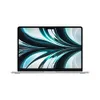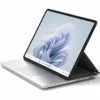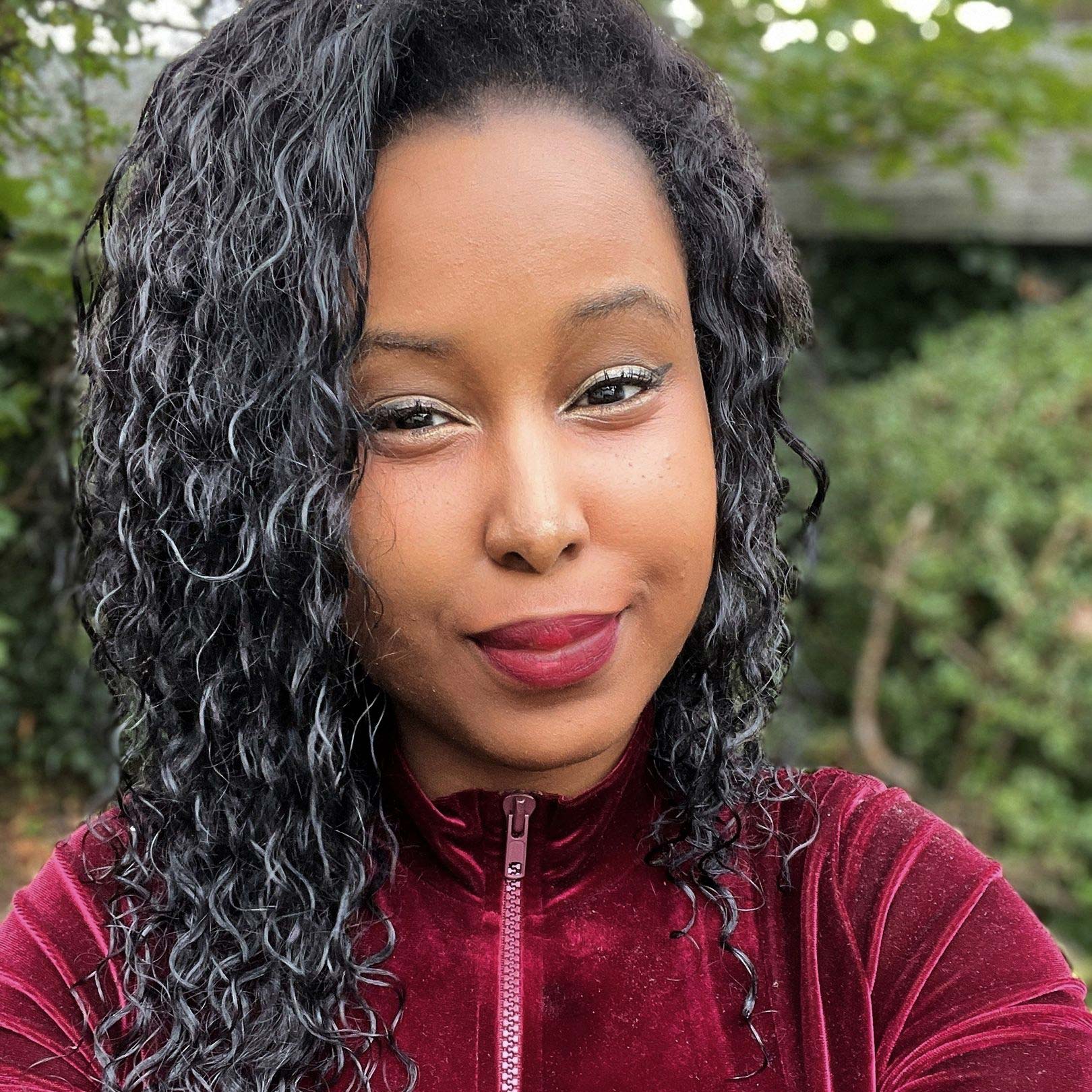Google Pixel Fold vs. Samsung Galaxy Z Fold 4: What's the difference?
Is Google's foldable better than its Samsung rival?
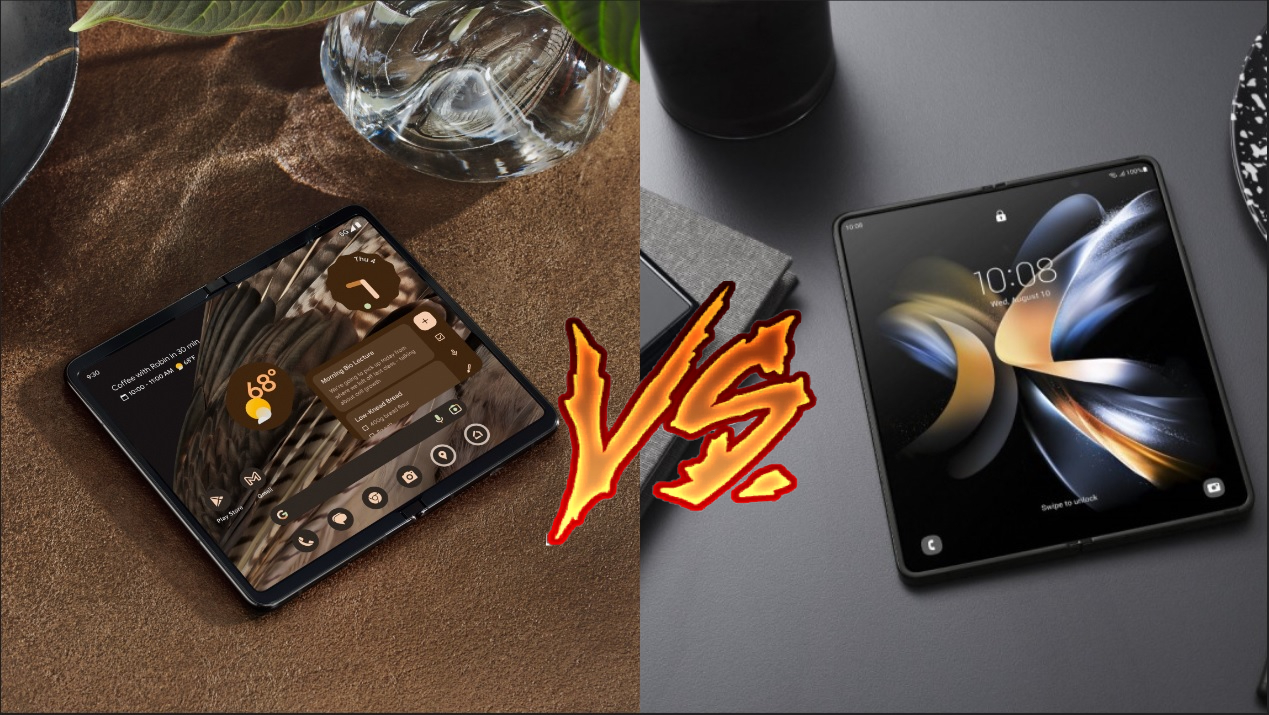
Google Pixel Fold vs. Samsung Galaxy Z Fold 4 is the foldable face-off of the year. After teasing it on social media, Google finally unveiled the long-rumored foldable at I/O — and people are curious about how compares to its Samsung rival. After all, the Galaxy Z Fold 4 is often touted as one of the best foldables one can buy, but can the Pixel Fold knock its Samsung competitor of its throne?
Google boasts that the Pixel Fold is the world's thinnest foldable phone, whether it's folded or unfolded. But of course, slimness does not a good foldable make. Let's do a deep dive into the specs to see whether the Pixel Fold holds a candle to the Galaxy Z Fold 4.
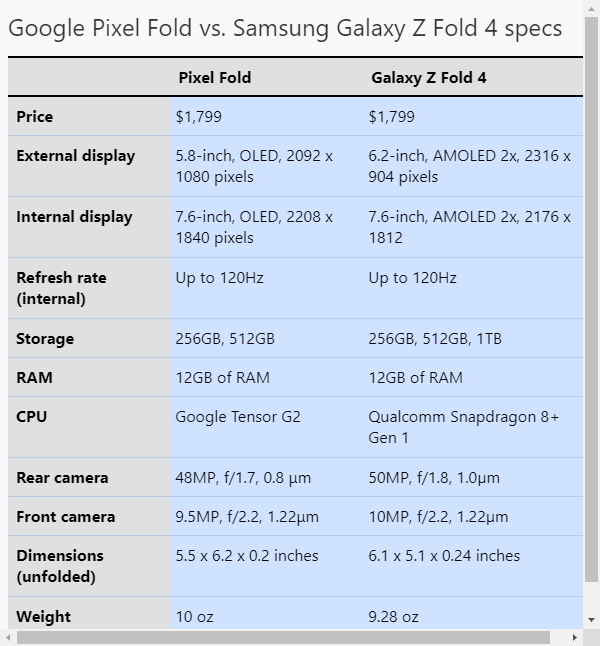
| Row 0 - Cell 0 | Google Pixel Fold | Galaxy Z Fold 4 |
| Price | $1,799 | $1,799 |
| External display | 5.8 inch, OLED, 2092 x 1080 pixels | 6.2-inch, AMOLED 2x, 2316 x 904 pixels |
| Internal display | 7.6-inch, OLED, 2208 x 1840 pixels | 7.6-inch, AMOLED 2x, 2176 x 1812 |
| Refresh rate (internal) | Up to 120Hz | Up to 120Hz |
| Storage | 256GB, 512GB | 256GB, 512GB, 1TB |
| CPU | Google Tensor G2 | Qualcomm Snapdragon 8+ Gen 1 |
| RAM | 12GB of RAM | 12GB of RAM |
| Rear camera | 48MP, f/1.7, 0.8 μm | 50MP, f/1.8, 1.0µm |
| Front camera | 9.5MP, f/2.2, 1.22μm | 10MP, f/2.2, 1.22µm |
| Dimensions (unfolded) | 5.5 x 6.2 x 0.2 inches | 6.1 x 5.1 x 0.24 inches |
| Weight | 10 oz | 9.28 oz |
Google Pixel Fold vs. Samsung Galaxy Z Fold 4 price
Google is clearly positioning the Pixel Fold as a Galaxy Z Fold 4 rival with its $1,799 starting price tag. This configuration comes with 256GB of storage. You can upgrade to 512GB, but it will cost you $1,919.
You can pre-order the Pixel Fold at the Google Store and you'll get receive it by next month.
The Galaxy Z Fold 4 also has a starting price of $1,799 via Samsung.com, which comes with 256GB of storage. Matching the Pixel Fold, the Galaxy Z Fold 4 costs $1,919 if you upgrade to the 512GB variant. But unlike its new Google rival, it doesn't stop there. You can get a configuration with 1TB of storage; this will set you back a whopping $2,159. Whew!
Winner: Draw
Google Pixel Fold vs. Samsung Galaxy Z Fold 4 design
Google boasts that the Pixel Fold is the world's thinnest foldable. Truth be told, this is slightly concerning because the Microsoft Surface Duo was quite thin, too, which I suspect played a role in its fragility. However, Google claims that the Pixel Fold is durable, thanks to its Corning Gorilla Glass Victus outer screen. Plus, like the Galaxy Z Fold 4, it's got an IPX8 water resistance rating. This means that it can sustain 30-minute water submergence for up to five feet.
Stay in the know with Laptop Mag
Get our in-depth reviews, helpful tips, great deals, and the biggest news stories delivered to your inbox.
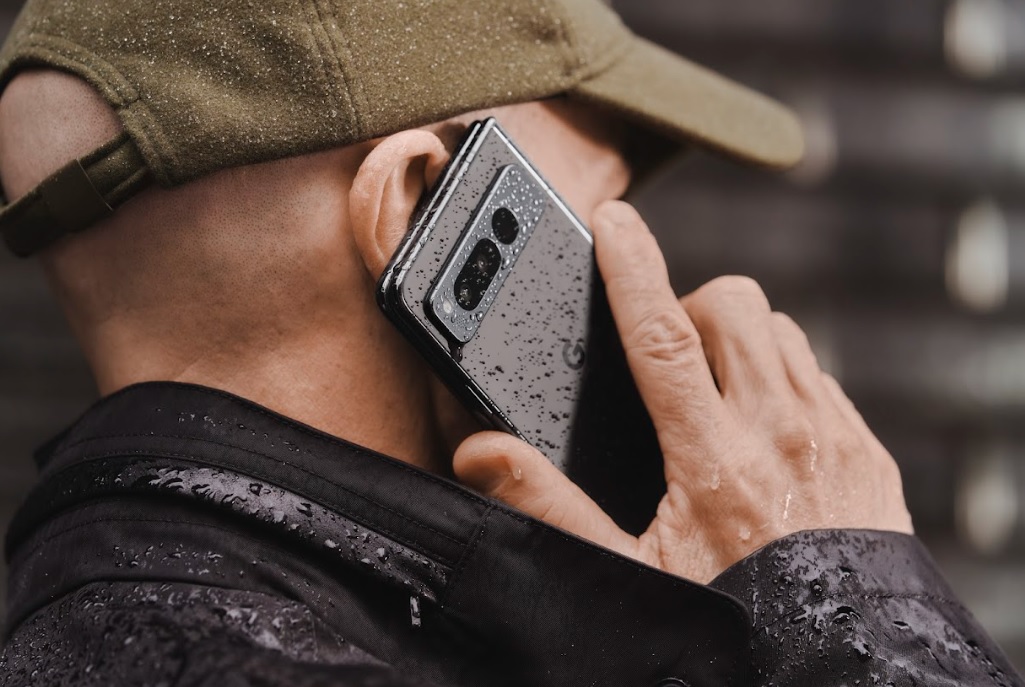
Design-wise, the Pixel Fold appears to be a mixture of three phones: The Pixel 7 Pro, the Surface Duo, and the Galaxy Z Fold 4.
Its rear triple-camera setup has that funky visor look à la the Pixel series. (The cameras are housed inside a rectangular camera bump with rounded edges.)
How is it reminiscent of the Surface Duo? Well, as aforementioned, they're both unfathomably thin. However, that's not the only aspect that is Surface Duo-esque. Open the book-like form factor and you'll find that the 7.6-inch display is surrounded by thick bezels like the Surface Duo. Conversely, the Galaxy Z Fold 4's bezels (also surrounding a 7.6-inch display) seem nearly non-existent. Some may argue that thick bezels are a visual nuisance, but others dig it because they give users a place to comfortably rest their fingers.

And like the Galaxy Z Fold 4, the Pixel Fold has a cover screen. It's slightly smaller, though, at 5.8 inches. Its Samsung rival has a larger cover display (6.2 inches). In the same way that Google's new foldable mirrors the Pixel series' design language, the Galaxy Z Fold 4 does the same. Its rear chassis resembles a Samsung Galaxy S series phone with a triple-lens setup stacked on top of each other.
The Google Pixel Fold is negligibly heavier than the Galaxy Z Fold 4 (10 oz vs. 9.28 oz), but it's slightly thinner (0.2 inches vs. 0.24 inches).
Hinge
While Samsung boasted that the Flexible Armor Hinge on the Galaxy Z Fold 4, made of armor aluminum-coated Ultra Thin Glass, is twice as durable as the hinge on the Galaxy Z Fold 3, Google takes it a couple steps further. The search-engine giant claims that the Pixel Fold's stainless-steel hinge is the most durable on a foldable phone ever.
Materials
The Google Pixel Fold rear chassis consists of a Corning Gorilla Glass back with a polished aluminum frame. Its hinge is made of mirror polish stainless steel. The Galaxy Z Fold 4, on the other hand, uses Gorilla Glass Victus+ for the front and rear; its frame consists of armor aluminum.
Winner: Galaxy Z Fold 4
Google Pixel Fold vs. Samsung Galaxy Z Fold 4: Cover Screen
The Galaxy Z Fold 4's cover screen is made of Corning Gorilla Glass Plus while the Pixel Fold's front display consists of Corning Gorilla Glass. You'd think that "Plus" would be more durable, but that's not exactly the case. As Tom's Guide pointed out, JerryRigEverything tested the Gorilla Glass Victus Plus' scratch resistance on the Galaxy Z Fold 4, but like the non-Plus screen (tested on the Galaxy Z Fold 3), "it still suffers scratches at level 6 on the Mohs scale."
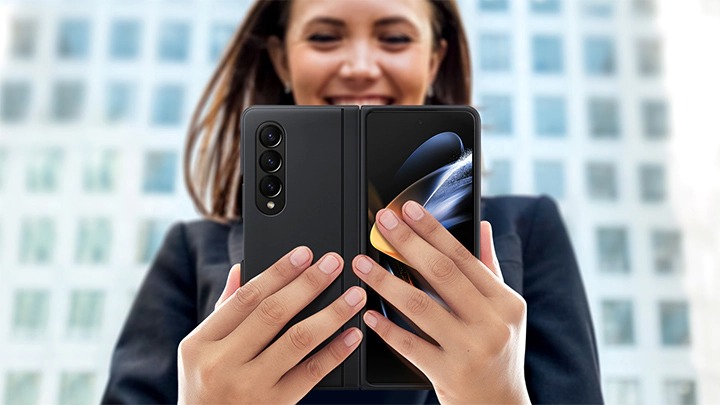
As mentioned in the design section, the Pixel Fold's 5.8-inch cover screen is smaller than the Galaxy Z Fold 4's 6.2-inch outer display. It also sports a 2092 x 1080-pixel, 408 ppi, OLED display, an aspect ratio of 17.4:9, and a reported peak brightness of 1550 nits (we'll see about that).
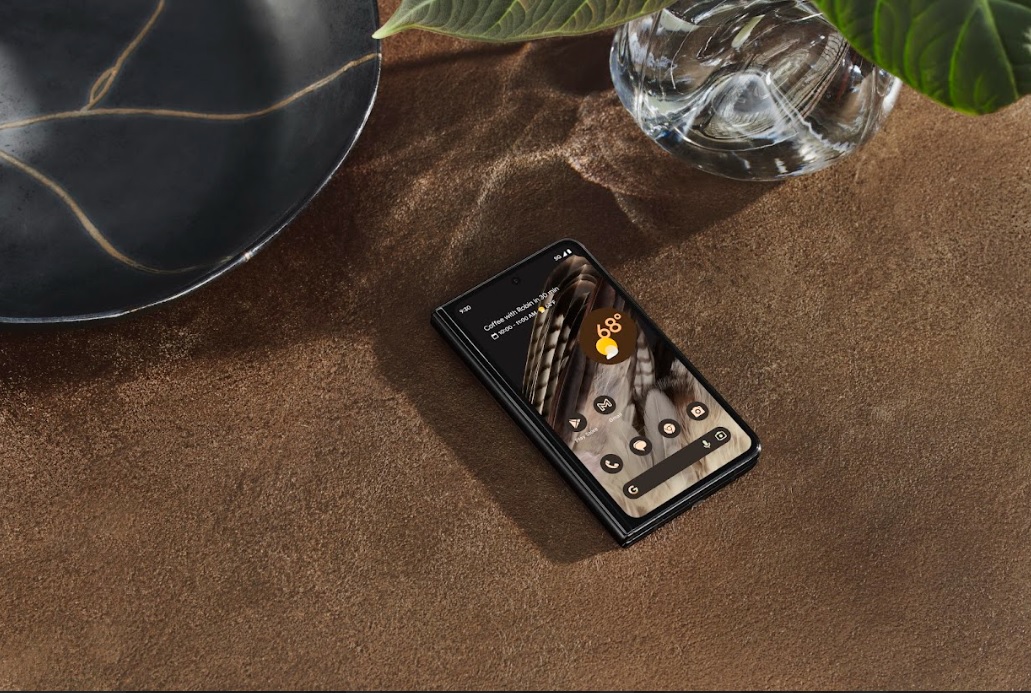
Conversely, the Galaxy Z Fold 4 delivers an AMOLED 2x display with a 2316 x 904-pixel resolution and a ppi of 402. According to our in-house testing, the Galaxy Z Fold 4 has a peak brightness of 870 nits.
On both phones, you can use the cover screen to check notifications, access your favorite apps, find out the time and weather, take photos and videos, control music playback, and more.
Winner: Galaxy Z Fold 4
Google Pixel Fold vs. Samsung Galaxy Z Fold 4: Inner display
The new Google phone, like the Galaxy Z Fold 4, unfolds into a stunning 7.6-inch screen — who doesn't love a good ol' phone-to-tablet form factor? It packs a 2208 x 1840-pixel, OLED screen, a 6:5 aspect ratio, a 380 ppi, and a refresh rate of up to 120Hz. The search-engine giant claims that the Pixel Fold's inner display has a peak brightness of 1450 nits (again, we'll see about that).
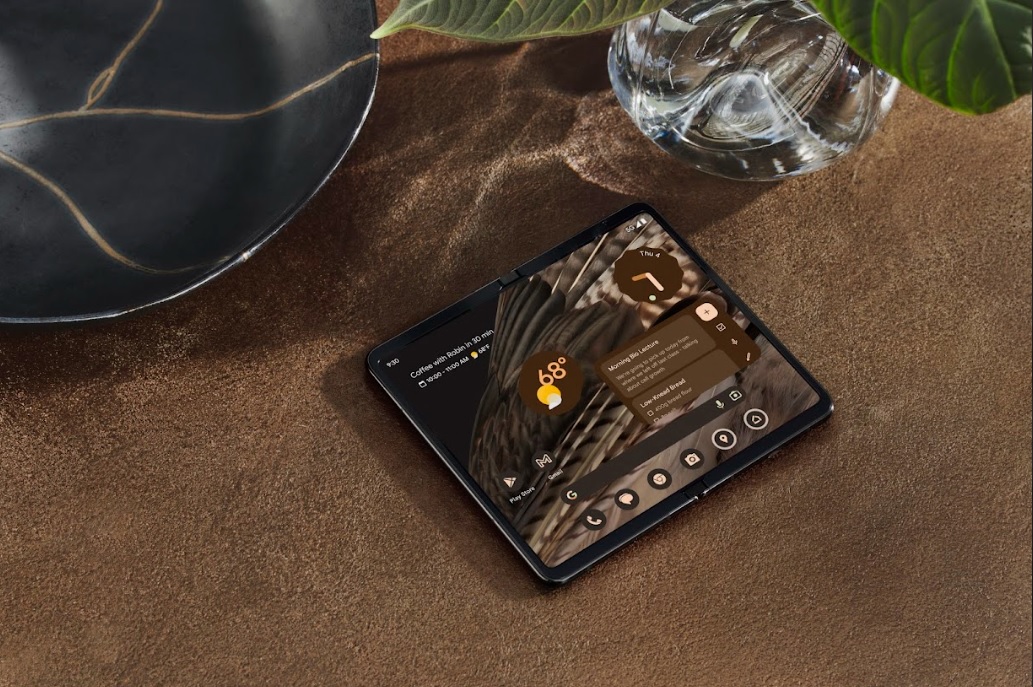
The Galaxy Z Fold 4, on the other hand, sports a 2176 x 1812-pixel, AMOLED 2X display, a 21.6:18 aspect ratio, and a 373 ppi. It, too, supports a refresh rate of up to 120Hz. According to our test results, the Galaxy Z Fold 4's internal display has a peak brightness of 905 nits. It also covers 159% of the DCI-P3 color gamut.
I'd argue that the Galaxy Z Fold 4's inner display is more immersive and delivers better screen real state, thanks to its barely there bezels. The frame surrounding the Pixel Fold's main screen is much thicker. On the plus side, this makes the phone much easier to hold. However, it reduces the Pixel Fold's screen-to-body ratio.
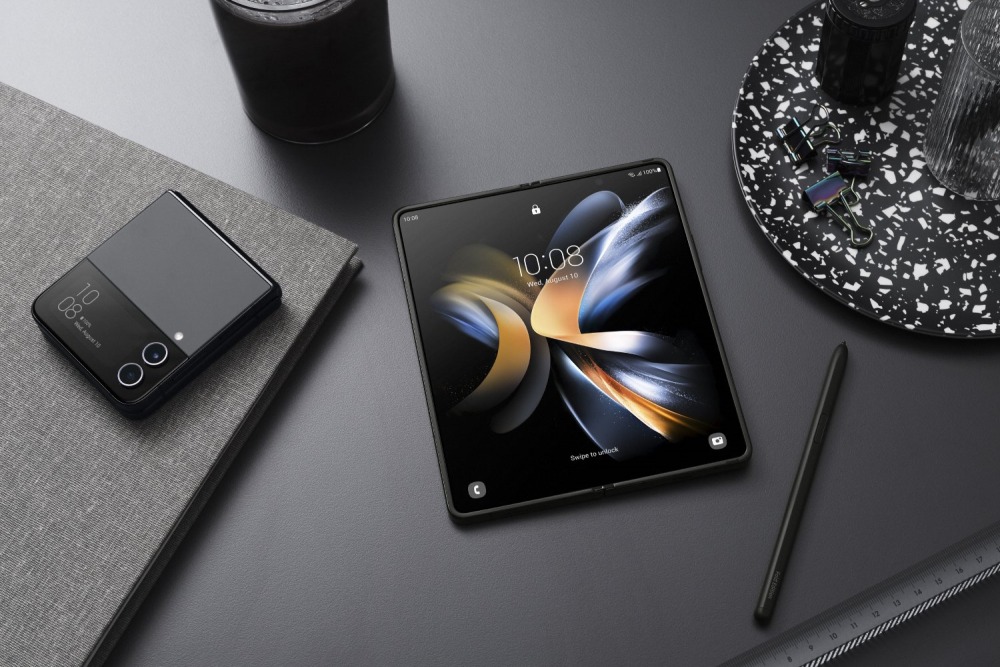
Looking at the resolution and pixels per inch, the Pixel Fold's inner display may provide sharper, more detailed picture compared to the Galaxy Z Fold 4, but it may not be a major difference the naked eye would notice. We won't know for sure until we compare both phones' inner displays side-by-side.
Like the Galaxy Z Fold 4, the Pixel Fold's displays benefit multitaskers. You can open two apps side by side. Plus, you can drag and drop images, videos, links, and text from one app to another for seamless sharing and productivity.
Winner: TBA
Google Pixel Fold vs. Samsung Galaxy Z Fold 4: Processor
It's a wrap for the Google Pixel Fold. There's no way that the Tensor G2 chip can outperform the processor on the Samsung Galaxy Z Fold 4 (Qualcomm Snapdragon 8+ Gen 1).
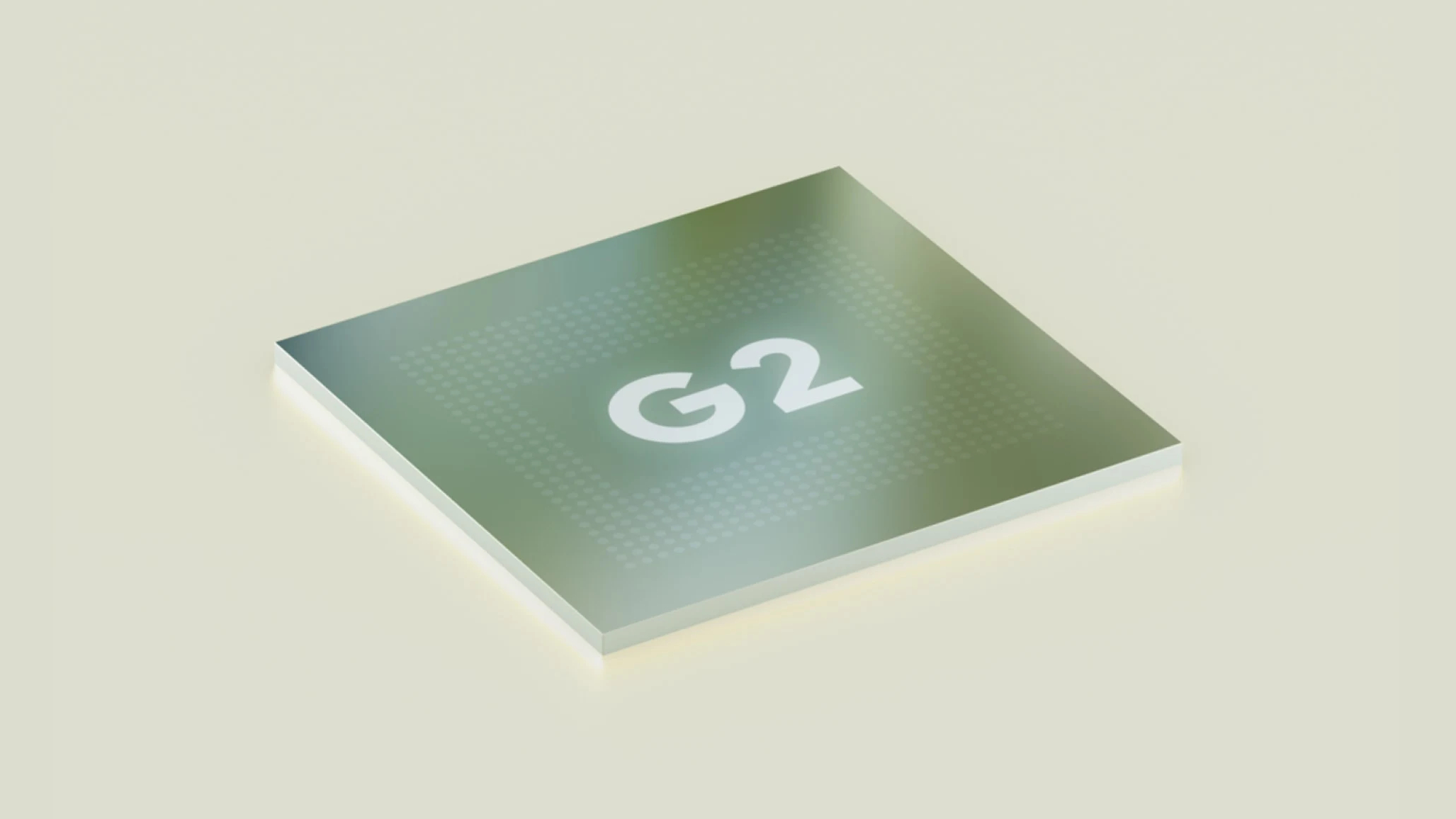
According to our testing, the Tensor G2 chip packed inside the Pixel 7 Pro delivered a Geekbench 5 multi-core score of 3,046, which couldn't keep up with the Snapdragon 8+ Gen 1 inside the Galaxy Z Fold 4 (3,831).
This is expected considering that the Snapdragon 8+ Gen 1 has a higher clock speed (it also sports a more powerful GPU, too). However, what that Geekbench test doesn't show you is that the Tensor G2 is better at performing machine-learning tasks. It also has a more powerful image signal processor (ISP). This means that the Pixel Fold should be exceptional at performing tasks such as speech recognition, transcription, language translation, avant-garde artificial intelligence, and more.
In other words, thanks to the Tensor G2 chip, the Pixel Fold will offer exclusive features like Live Translate interpreter mode, which uses both the inner and outer displays simultaneously for easier face-to-face conversations in different languages.
In addition to the Tensor G2 chip, the Pixel Fold is outfitted with the Titan M2 chip, which offers multiple layers of hardware security, making the Pixel Fold more resilient to attacks. Plus, the Pixel Fold's power button doubles as a fingerprint sensor. (Both the Galaxy Z Fold 4 and Pixel Fold have biometric authentication with fingerprints and facial recognition.) Finally, the Pixel Fold comes with five years of security updates. As a cherry on top, Pixel Fold owners get Google One VPN — at no extra cost.
Winner: Galaxy Z Fold 4
Google Pixel Fold vs. Samsung Galaxy Z Fold 4: Cameras
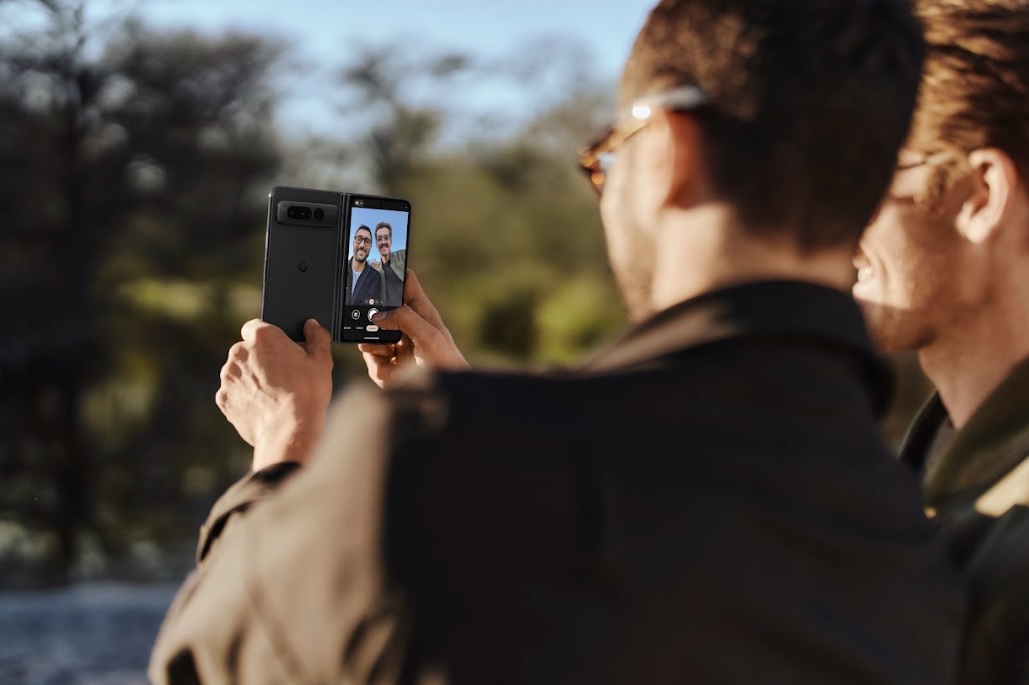
Thanks to their book-like form factor, both foldables can be propped up on a surface, allowing users to take hands-free photos without a tripod.
The Google Pixel Fold, like its Samsung rival, has five cameras:
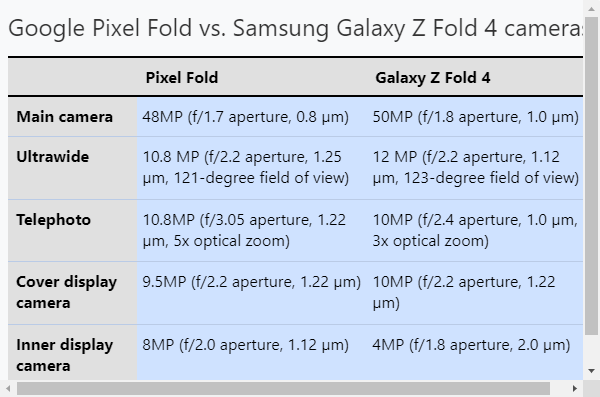
| Row 0 - Cell 0 | Google Pixel Fold | Galaxy Z Fold 4 |
| Main camera | 48MP (f/1.7 aperture, 0.8 µm) | 50MP (f/1.8 aperture, 1.0 µm) |
| Ultrawide | 10.8 MP (f/2.2 aperture, 1.25 µm, 121-degree field of view) | 12 MP (f/2.2 aperture, 1.12 µm, 123-degree field of view) |
| Telephoto | 10.8MP (f/3.05 aperture, 1.22 µm, 5x optical zoom) | 10MP (f/2.4 aperture, 1.0 µm, 3x optical zoom) |
| Cover display camera | 9.5MP (f/2.2 aperture, 1.22 µm) | 10MP (f/2.2 aperture, 1.22 µm) |
| Inner display camera | 8MP (f/2.0 aperture, 1.12 µm) | 4MP (f/1.8 aperture, 2.0 µm) |
If these specs have your head spinning, let me break it down how the Pixel Fold compares to the Galaxy Z Fold 4's shooters in an easy-to-understand fashion.
- On paper, the Galaxy Z Fold 4's 50MP main camera may appear to trump the 48MP main camera on the Pixel Fold, but we don't know sure sure, especially since the Google foldable has a slightly wider aperture, which means it lets in more light. (It's also worth noting that the Galaxy Z Fold 4 has a larger sensor than the Pixel Fold, so it's anyone's game at this point).
- The Galaxy Z Fold 4's ultra-wide camera appears to be better than the Pixel Fold's ultra-wide shooter. It will likely render better details. Plus, it has a wider field of view.
- The Pixel Fold's telephoto has a higher resolution by a hair and it delivers more optical zoom to users. However, it captures less light than the Galaxy Z Fold 4's telephoto.
- Although the optical zoom range on the Galaxy Z Fold 4 is less than the Pixel Fold's telephoto, it has a wider digital zoom range of up to 30x. The Pixel Fold's telephoto offers up to 20x of what Google calls "SuperRes Zoom."
- The Pixel Fold's 9.5MP inner display camera is seemingly better than its Galaxy Z Fold 4 counterpart (4MP).
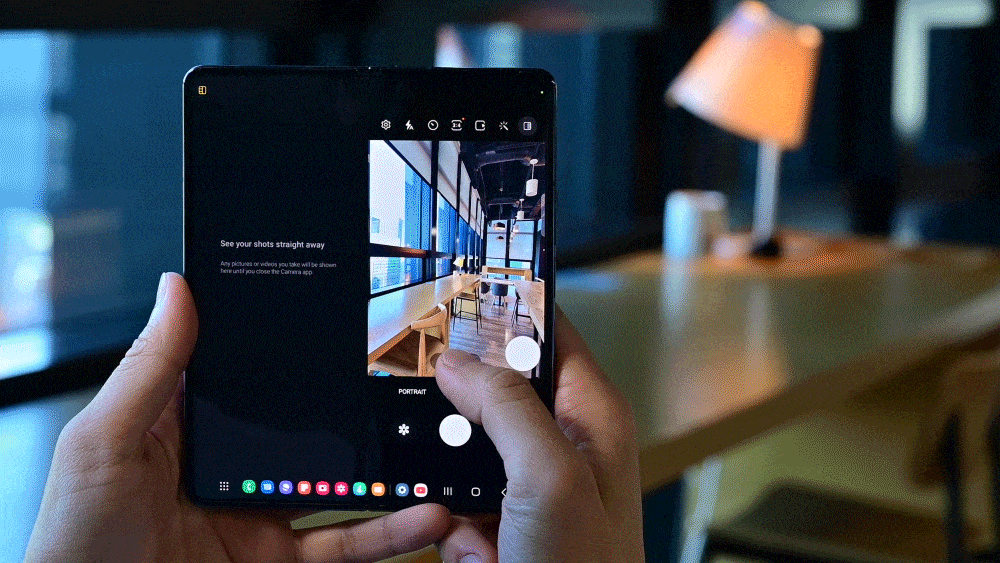
Still, this is all just speculation based on what we see on paper.
The Pixel Fold may outperform the Galaxy Z Fold 4 in terms of computational photography, thanks to the powerful ISP packed inside the Tensor G2 chip. For example, users will have the opportunity to take advantage of cool Google features like faster Night Sight, Photo Unblur, and more. We'll have to perform a proper camera comparison test to know, for sure, which foldable produces the best photos.
Winner: TBA
Google Pixel Fold vs. Samsung Galaxy Z Fold 4: Battery life
The Google Pixel Fold is packed with a dual 4,821 mAh battery. According to the search-engine giant, the Pixel Fold offers "beyond 24 hours of battery life" and "up to 72 hours of battery life" via Extreme Battery Saver mode.
Google says that its battery life estimate is based on using a median Pixel user's battery usage profile, which includes a mix of talk, data, standby time, and other features. I'm not sure if I believe that battery claim, but Google stresses that the inner display is adaptive and prioritizes users' most used apps, which contributes to its power-efficiency. I'm itching to get the Pixel Fold in so that we can test it on the Laptop Mag battery test, which runs down phones at 150 nits of brightness on a major carrier network.
According to our in-house testing, with the main display on, the Galaxy Z Fold 4 (4,400 mAh battery) could only last 9 hours and 6 minutes. It's possible that the Pixel Fold outpaces its Samsung rival in power efficiency, but can survive for more than 24 hours? I doubt it.
Winner: TBA
Outlook
So far, the Galaxy Z Fold 4 appears to be the winner, but it's too early to tell.
Foldables still haven't had their breakthrough yet. They're too expensive, they lack durability, and they haven't penetrated the "in-crowd" (i.e., the powers that be that dictate what's cool and what's not).
I'm not convinced that Google will be the company to make foldables the next big thing, but at the same time, the search-engine giant may prove me wrong. The Pixel Fold is priced at a wallet-burning $1,800, so Google will have to pull a marketing miracle to persuade the masses to sacrifice nearly $2,000 for their first-gen foldable.
Kimberly Gedeon, holding a Master's degree in International Journalism, launched her career as a journalist for MadameNoire's business beat in 2013. She loved translating stuffy stories about the economy, personal finance and investing into digestible, easy-to-understand, entertaining stories for young women of color. During her time on the business beat, she discovered her passion for tech as she dove into articles about tech entrepreneurship, the Consumer Electronics Show (CES) and the latest tablets. After eight years of freelancing, dabbling in a myriad of beats, she's finally found a home at Laptop Mag that accepts her as the crypto-addicted, virtual reality-loving, investing-focused, tech-fascinated nerd she is. Woot!
